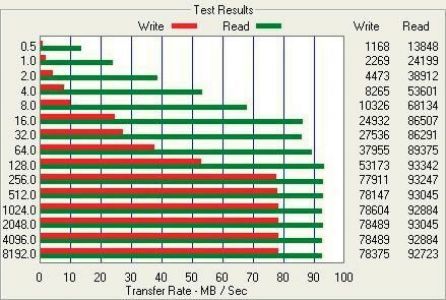Flash Storage Transfer Specs versus Performance in Applications
 When searching for flash storage devices many specifications can be used to make a decision. In this post I will review maximum and sustained transfer rate specs that are important, but in many cases not indicative of the results you will actually see in your application.
When searching for flash storage devices many specifications can be used to make a decision. In this post I will review maximum and sustained transfer rate specs that are important, but in many cases not indicative of the results you will actually see in your application.
The maximum bus speed and sustained read and write speeds are two items decisions are based upon. But, they should be viewed in the overall context of how the product will perform in a specific application.
Maximum bus speed is the fastest a particular interface can transfer data. The SATA III interface for example is rated at 6.0Gbits/second (or 750Mbytes/second). This is the maximum data can be transferred, but does not signify the product can meet or sustain this speed.
I’ve heard Maximum bus speed compared to a large pipe. It has the capability of moving a lot of water, but it may be running at a small percentage of its capacity and only produce a trickle of flow at the end.
Sustained read and write speeds tell a better, but still not complete story. Since sustained read and write speeds typically do not specify the block size or whether data is transferred sequentially or randomly.
The industry standard is to use the best case (large, sequential block) transfers for published sustained read and write performance. While this is accurate, it generally does not apply to the OEMs or end users’ application, since many operating systems perform mostly small, random block transfers.
If performance is a key determining factor, you should seek out the best device for your specific usage model.
For this I suggest first understanding what your application’s usage model is and, if possible, test the actual flash storage device you’re considering in your application. If this is not an option, there are a number of benchmarking utilities which produce performance results based on difference block sizes, random and sequential transfers.
We’d be happy to assist you as you make your buying decision, please contact a Cactus Expert if you would like to discuss.






